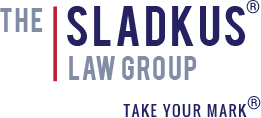Supreme Court Rules on Copyright Damages Cap Issue
On May 9, 2024, The Supreme Court decided the case of Warner Chappell Music, Inc. v. Nealy (22-1078). At issue in the case was the question of whether a plaintiff in a copyright infringement lawsuit was barred from seeking damages more than three years before the date the lawsuit was filed in light of the Copyright Act’s statute of limitations. The Court held that under the “discovery accrual rule,” if a copyright infringement claim is timely filed, there is no time limit on monetary recovery.
At the heart of the case is the Copyright Act’s three-year statute of limitations. Under the Copyright Act, a potential copyright infringement plaintiff must file suit within three years after its infringement claim “accrued.” 17 U.S.C. § 507(b) (“[n]o civil action shall be maintained under the provisions of this title unless it is commenced within three years after the claim accrued.”) “Accrued,” however, is not defined in the Act. Thus, Courts have used two distinct tests for assessing when a copyright infringement claim “accrues” for statute of limitations purposes. The first test turns on when the infringement occurred. Under this test, a plaintiff “can complain about infringement going back only three years from the time he filed suit.” Any claim brought more than three years after the occurrence of the infringement is barred. The second test, however, examines when the plaintiff “discovers, or with due diligence should have discovered” the infringement. In the Eleventh Circuit – covering Georgia, Florida, and Alabama – this “discovery rule” governs the timeliness of an infringement claim. Under the discovery rule, a plaintiff must file suit within three years of when it discovers, or reasonably should have discovered, the infringement.
With that legal framework in mind, the case at issue involved copyright infringement claims brought by the plaintiff, Sherman Nealy, against Warner Chappell and others for infringement of certain musical works created by Nealy and a partner. From 1989 to 2008 and 2012 to 2015, Nealy was imprisoned, and his partner entered into various licensing agreements for the musical works at issue. In 2018, Nealy sued Warner Chappell for copyright infringement stemming from those licensing agreements, alleging that he owned the copyrights to the works at issue and that Warner Chappell had infringed his exclusive rights. Nealy’s claims dated back to 2008, ten years prior to the filing of the lawsuit. However, Nealy argued that his claims were timely under the “discovery rule,” because he did not learn of the infringement until 2016, just after being released from prison, and he filed suit just two years later, in 2018.
Warner Chappell did not contest the timeliness of the claim under the “discovery rule,” but argued that Nealy’s damages were limited to a three-year lookback period from the date the lawsuit was filed. The trial court agreed, relying on a decision from the Second Circuit Court of Appeals: Sohm v. Scholastic Inc., 959 F. 3d 39 (2nd Cir. 2020). The Court of Appeals for the Eleventh Circuit reversed the decision, though, and aligned itself with the law of the Ninth Circuit, instead of the Second Circuit. The Eleventh Circuit ruled that a plaintiff with a timely claim under the discovery rule can recover damages that occurred more than three years before the lawsuit was filed. According to the Eleventh Circuit, “the plain text of the Copyright Act does not support the existence of a separate damages bar for an otherwise timely copyright claim.” 60 F.4th 1325, 1334 (11th Cir. 2023).
The Supreme Court sided with the Eleventh Circuit. Relying on the absence of any time limit on monetary recovery in the relevant sections of the Copyright Act, the Court ruled that “[i]f any time limit on damages exists, it must come from the Act’s remedial sections. But those provisions [] do not aid a long-ago infringer . . . There is no time limit on monetary recovery. So a copyright owner possessing a timely claim for infringement is entitled to damages, no matter when the infringement occurred.” To impose a bar on damages dating back further than three years from the date the case was filed under the discovery rule, according to the Court, would be “self-defeating.” On the one hand, copyright owners could sue for infringing acts more than three years earlier, but on the other hand, the copyright owner would be prevented from recovering damages for those older infringements. The “discovery rule” would be gutted if that were the case.
The Supreme Court’s opinion also addressed its earlier 2014 decision in Petrella v. Metro-Goldwyn-Mayer, Inc., 572 U.S. 663 (2014), where the Court stated that a plaintiff can “gain retrospective relief running only three years back from” the filing of an infringement case. Although seemingly supporting Warner Chappell’s position in Nealy, the Court held that Warner Chappell took the quote out of context. In Petrella, the plaintiff sued only for infringements that occurred in the three years before filing suit. Thus, in that case, the Court “merely described how the limitations provision works when a plaintiff has no timely claims for infringing acts more than three years old.” (Emphasis added.) Because the Petrella case did not involve claims for infringement older than three years and the plaintiff did not, and could not, invoke the discovery rule, the Court’s 2014 pronouncement did not govern Nealy’s case.
The Court’s Nealy holding is narrow. Notably, the Supremes did not address the issue of whether the occurrence rule or the discovery rule is the correct approach to the Copyright Act’s statute of limitations. Instead, it limited its opinion to only the scope of recoverable damages under the discovery rule, where it applies.
Read the full opinion here: https://www.supremecourt.gov/opinions/23pdf/22-1078_4gci.pdf




